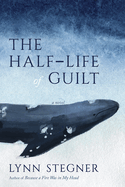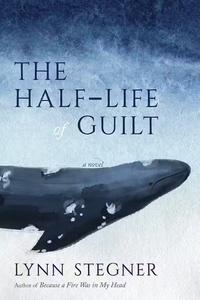
 From the start, Lynn Stegner's The Half-Life of Guilt delivers an ominous feeling. Soon enough, what it's building to is revealed, and it is, in fact, awful, but the awful thing is not the point. In the months and years that follow, the twins Nina and Clair process those few minutes that changed everything.
From the start, Lynn Stegner's The Half-Life of Guilt delivers an ominous feeling. Soon enough, what it's building to is revealed, and it is, in fact, awful, but the awful thing is not the point. In the months and years that follow, the twins Nina and Clair process those few minutes that changed everything.
Like the accumulation of that family history, the present-day narrative tilts and rolls like a slow-moving ship, taking readers into some unknown, inexorable future. Clair, now a botanist, and Mason, a photographer, deal with the intricacies of their ongoing relationship on their way to a remote area in Baja California, Mexico. There, a saltworks expansion is likely to reduce or possibly eliminate the California gray whales that have just recently returned from the edge of extinction. Though the destruction being wrought by unscrupulous actors is real, the heart of this story is not environmentalist polemic. Instead, it's about love--familial and romantic love--and about making yourself vulnerable to another. It's about forgiveness and hope and, of course, guilt. Though there is a whale on the cover (a gorgeous illustration by Felicia Cedillos), there are almost 200 pages of memory and travel before they reach their destination and finally see the whales.
Which is not to say that the pacing is off; while weighty, the plot is never tedious. And Stegner's simply stunning writing is full of sentences that sing off the page, and improbable yet perfectly apt descriptions: "The air ticks with heat, and the heat becomes time, and the time is everywhere and nowhere, a sudden menacing surfeit of the incomprehensible." This is a thoroughly literary novel, but the revelations keep raising the pulse of the story.
In that first moment with the whales, "Clair manages to forget herself... forget fear and other feelings that have names; forget history... the shadowed pain in a sister's eyes, forget thirst and the first taste of water." Despite the many memories pressing in, Clair's moment of forgetting marks a shift that will inform every moment to follow, including her relationship with Nina, who figures in all of Clair's past and hides inside every hope she might have for the future: "It began with Nina and it continues with Nina, a fine-print clause in their unspoken contract." Stegner knows the powerful bond between sisters, and The Half-Life of Guilt is a powerful story, beautifully told. --Sara Beth West, freelance reviewer and librarian
Shelf Talker: The Half-Life of Guilt follows Clair as she wrestles with the past and the family tragedy that haunts her while finding her way in her present romantic relationship.

